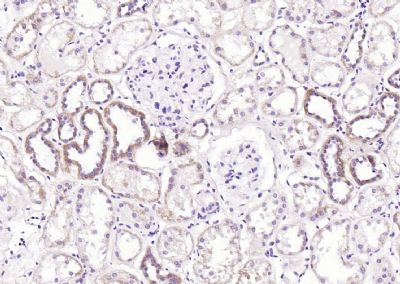Required for both basal and inducible autophagy. Plays a role in autophagosome formation and MAP1LC3/LC3 conjugation to phosphatidylethanolamine. Promotes BECN1 translocation from the trans-Golgi network to autophagosomes. Enhances PIK3C3 activity in a BECN1-dependent manner.
Function:
Required for both basal and inducible autophagy. Determines the localization of the autophagy-specific PI3-kinase complex. Plays a role in autophagosome formation and MAP1LC3/LC3 conjugation to phosphatidylethanolamine. Promotes BECN1 translocation from the trans-Golgi network to autophagosomes. Enhances PIK3C3 activity in a BECN1-dependent manner.
Subunit:
Component of the autophagy-specific PI3-kinase complex I composed of ATG14, BECN1, PIK3C3 and PIK3R4, but not UVRAG, nor KIAA0226/Rubicon. UVRAG and ATG14/Barkor form mutually exclusive complexes with BECN1 through direct competition. The complex containing ATG14 up-regulates autophagy, while the one containing Rubicon down-regulates autophagy (By similarity). Interacts with PIK3CB (By similarity). Interacts with BECN1P1/BECN2.
Subcellular Location:
Cytoplasm. Endoplasmic reticulum. Cytosolic under nutrient-rich conditions. Following autophagy stimuli, such as starvation or rapamycin induction, predominantly detected in cytoplasmic foci, identified as isolation membranes and autophagosomes.
Similarity:
Belongs to the Barkor family.
SWISS:
Q6ZNE5
Gene ID:
22863
Database links:
Entrez Gene: 22863 Human
Entrez Gene: 100504663 Mouse
Entrez Gene: 305831 Rat
Omim: 613515 Human
SwissProt: Q6ZNE5 Human
SwissProt: Q8CDJ3 Mouse
SwissProt: D4A4K3 Rat
Unigene: 42969 Human
Entrez Gene: 22863 Human
Entrez Gene: 100504663 Mouse
Entrez Gene: 305831 Rat
Omim: 613515 Human
SwissProt: Q6ZNE5 Hun
SwissProt: Q8CDJ3 MouseSwissProt: D4A4K3 Rat
Unigene: 42969 Human
| Picture |
Paraformaldehyde-fixed, paraffin embedded (Human kidney); Antigen retrieval by boiling in sodium citrate buffer (pH6.0) for 15min; Block endogenous peroxidase by 3% hydrogen peroxide for 20 minutes; Blocking buffer (normal goat serum) at 37°C for 30min; Antibody incubation with (ATG14) Polyclonal Antibody, Unconjugated (SL7462R) at 1:200 overnight at 4°C, followed by operating according to SP Kit(Rabbit) (sp-0023) instructionsand DAB staining.
|
|
|
